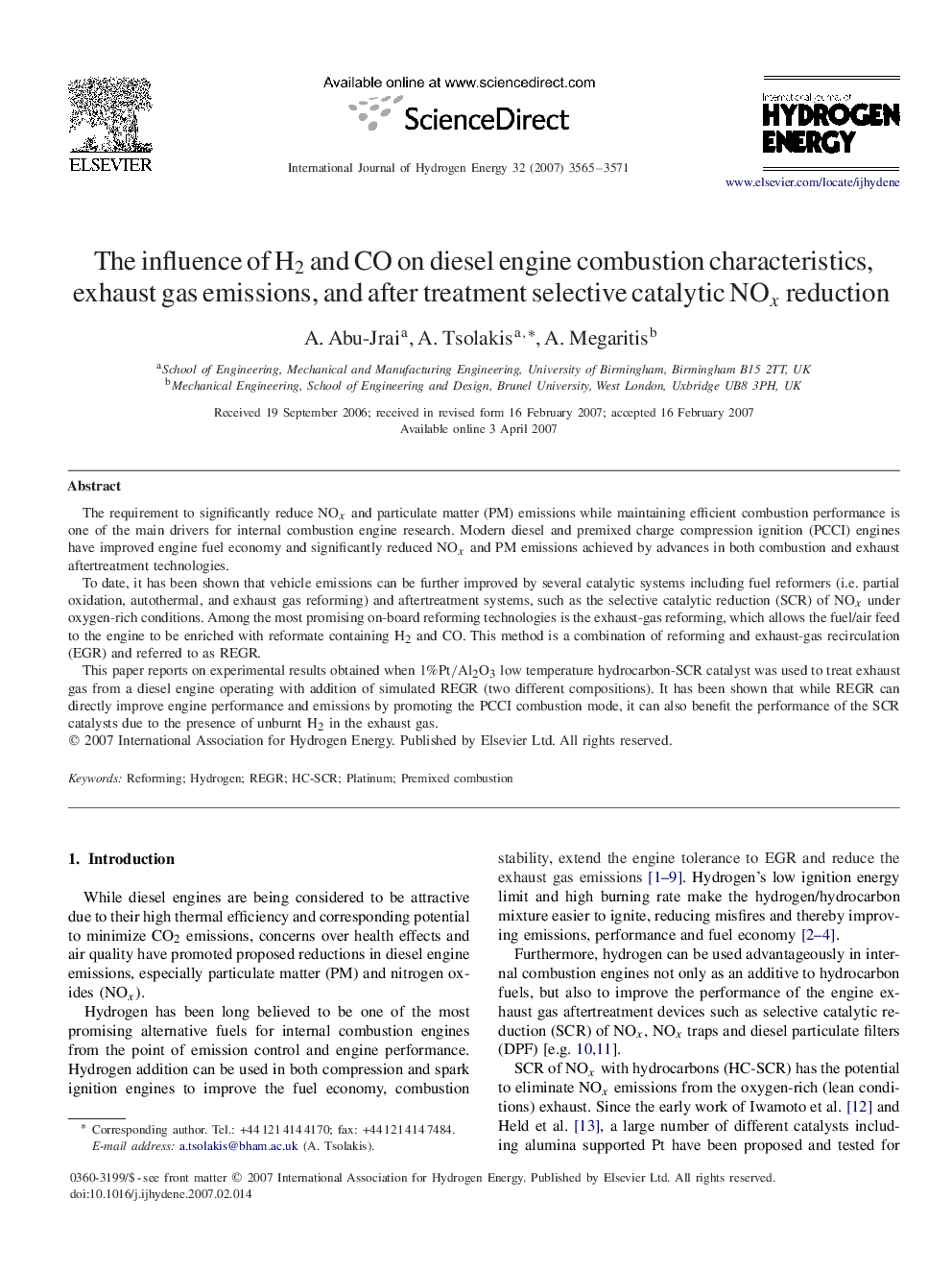| Article ID | Journal | Published Year | Pages | File Type |
|---|---|---|---|---|
| 1279703 | International Journal of Hydrogen Energy | 2007 | 7 Pages |
The requirement to significantly reduce NOxNOx and particulate matter (PM) emissions while maintaining efficient combustion performance is one of the main drivers for internal combustion engine research. Modern diesel and premixed charge compression ignition (PCCI) engines have improved engine fuel economy and significantly reduced NOxNOx and PM emissions achieved by advances in both combustion and exhaust aftertreatment technologies.To date, it has been shown that vehicle emissions can be further improved by several catalytic systems including fuel reformers (i.e. partial oxidation, autothermal, and exhaust gas reforming) and aftertreatment systems, such as the selective catalytic reduction (SCR) of NOxNOx under oxygen-rich conditions. Among the most promising on-board reforming technologies is the exhaust-gas reforming, which allows the fuel/air feed to the engine to be enriched with reformate containing H2H2 and CO. This method is a combination of reforming and exhaust-gas recirculation (EGR) and referred to as REGR.This paper reports on experimental results obtained when 1%Pt/Al2O31%Pt/Al2O3 low temperature hydrocarbon-SCR catalyst was used to treat exhaust gas from a diesel engine operating with addition of simulated REGR (two different compositions). It has been shown that while REGR can directly improve engine performance and emissions by promoting the PCCI combustion mode, it can also benefit the performance of the SCR catalysts due to the presence of unburnt H2H2 in the exhaust gas.
